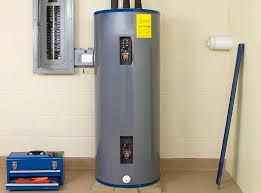Important Care Techniques for Your Home's Hot Water SystemHow to Extend the Lifespan of Your Home's Hot Water System By Maintenance
Important Care Techniques for Your Home's Hot Water SystemHow to Extend the Lifespan of Your Home's Hot Water System By Maintenance
Blog Article
Are you currently hunting for know-how about How to Maintain a Hot Water Heater in a Few Simple Steps?

Warm water is essential for everyday comfort, whether it's for a rejuvenating shower or cleaning dishes. To guarantee your warm water system runs efficiently and lasts much longer, regular maintenance is vital. This article offers functional tips and insights on just how to keep your home's hot water system to prevent disturbances and pricey repair work.
Intro
Keeping your home's hot water system might appear overwhelming, yet with a few basic steps, you can guarantee it runs efficiently for several years to come. This guide covers every little thing from recognizing your hot water system to DIY upkeep pointers and recognizing when to hire expert help.
Significance of Preserving Your Warm Water System
Normal maintenance not only prolongs the life expectancy of your warm water system yet additionally ensures it runs successfully. Neglecting upkeep can lead to decreased effectiveness, higher power expenses, and also early failing of the system.
Indicators Your Warm Water System Demands Upkeep
Recognizing when your warm water system needs attention can prevent significant issues. Look out for signs such as inconsistent water temperature, unusual noises from the heater, or rusty water.
Understanding Your Hot Water System
Before diving into maintenance tasks, it's useful to comprehend the fundamental components of your hot water system. Generally, this includes the water heater itself, pipes, anode rods, and temperature level controls.
Month-to-month Upkeep Tasks
Normal month-to-month checks can assist capture minor issues before they escalate.
Purging the Hot Water Heater
Flushing your water heater removes sediment buildup, boosting performance and extending its life.
Checking and Replacing Anode Rods
Anode rods prevent deterioration inside the container. Checking and replacing them when broken is vital.
Examining and Adjusting Temperature Setups
Changing the temperature settings ensures optimum performance and safety.
DIY Tips for Upkeep
You can do several maintenance jobs yourself to keep your warm water system in leading condition.
Looking for Leakages
Frequently inspect pipelines and links for leaks, as these can lead to water damages and higher costs.
Evaluating Stress Relief Valves
Testing the stress relief valve ensures it operates properly and prevents too much pressure build-up.
Protecting Pipes
Shielding hot water pipes minimizes heat loss and can conserve energy.
When to Call a Professional
While do it yourself maintenance is valuable, some problems require expert proficiency.
Facility Problems Requiring Expert Help
Instances include significant leaks, electrical troubles, or if your water heater is continually underperforming.
Routine Specialist Maintenance Perks
Professional upkeep can include complete inspections, tune-ups, and ensuring conformity with safety requirements.
Verdict
Routine upkeep of your home's hot water system is vital for efficiency, long life, and expense financial savings. By following these ideas and recognizing when to seek expert help, you can guarantee a trusted supply of hot water without unforeseen disturbances.
How to Maintain an Instant Hot Water Heater
Before tinkering with your hot water heater, make sure that it’s not powered on. You also have to turn off the main circuit breaker and shut off the main gas line to prevent accidents. Also turn off the water valves connected to your unit to prevent water from flowing into and out of the appliance. 2. When you’re done, you have to detach the purge valves’ caps. These look like the letter “T” and are situated on either side of the water valves. Doing so will release any pressure that has accumulated inside the valves while at the same time avoid hot water from shooting out and burning your skin. 3. When the purge valves’ caps are removed, you have to connect your hosing lines to the valves. Your unit should have come with three hoses but if it didn’t, you can purchase these things from any hardware or home repair shops. You can also get them from retail stores that sell water heating systems. Read the user’s manual and follow it to complete this task properly. When the hosing lines are connected, open the purge port’s valves. 4. You should never use harsh chemical cleaners or solutions when cleaning your unit. Make use of white vinegar instead. It should be undiluted and you’ll probably use about 2 gallons. 5. Now flush your water heater. This task should probably take about 40 minutes. We can’t give you specific directions for this because the procedure is carried out depending on the type, model and brand of your heater. With that being said, refer to the user’s manual. 6. When you’re done draining the unit, you have to turn off the purge port valves again. Remove the hosing lines that you earlier installed on each of the water valves. Put the valve caps (purge port) back in their respective places and be very careful so as not to damage the rubber discs that are found inside these caps. 7. Now that everything’s back in place, check your user’s manual again to find out how to reactivate your water heating system. 8. Once it is working, turn one of your hot water faucets on just to let air pass through the heater’s water supply pipes. Leave the tap on until water flows smoothly out of it. https://www.orrplumbing.com/blog/2014/september/how-to-maintain-an-instant-hot-water-heater/

I'm very serious about How to Maintain a Hot Water Heater in a Few Simple Steps and I hope you enjoyed the entire post. Enjoyed our entry? Please share it. Help someone else discover it. Thanks a bunch for being here. Revisit us soon.
This Post Report this page